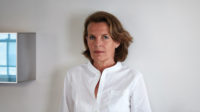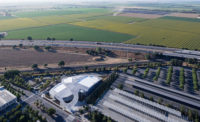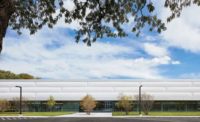The Rubell Museum by Selldorf Architects
Miami

The museum comprises several warehouse structures.
Photo © Nicholas Venezia

The former loading dock is now a lushly planted courtyard by the main entrance.
Photo © Nicholas Venezia

Parts of the building open to take advantage of the Miami climate.
Photo © Nicholas Venezia

Galleries were kept simple with existing concrete floors.
Photo © Nicholas Venezia

The main circulation spine passes the library.
Photo © Nicholas Venezia

Image courtesy Selldorf Architects






Architects & Firms
Mera and Don Rubell began buying contemporary art in the 1960s. By the early 1990s, they had moved their impressive collection of works by Jean-Michel Basquiat, Jeff Koons, Cindy Sherman, and Kara Walker (to name a few) into a repurposed U.S. Drug Enforcement Agency building in Miami, opening the two-story confiscated-goods facility to the public and helping to transform an industrial neighborhood into the lively Wynwood Arts District. A quarter of a century later, and together with their son Jason Rubell, they’ve made another curious choice to expand their exhibition capacity and outreach.
“We didn’t have a grand vision for a new museum. We were looking for more storage,” says Jason. But when they found the cluster of former produce warehouses, he recalls, “the space blew us away.” Now combined into the 76,000-square-foot Rubell Museum, the facility, which opens December 4, comprises six structures, including a small house, and occupies a full city block in Miami’s Allapattah District, an area known as a food-distribution and garment-manufacturing center just one mile from the old Rubell Family Collection building (which will now be rented out for events) but seemingly a world away.
The Rubells called on longtime acquaintance Annabelle Selldorf to transform the warehouses. “We needed a collaborative approach, and she is great at coming to common solutions,” says Jason. New York–based Selldorf Architects is also no stranger to crafting beautiful spaces for art out of whatever is thrown at it, having previously converted a 16-acre rail depot into the Luma Arles art complex in France and a former roller rink and nightclub into a gallery for Hauser & Wirth in New York.
“It’s all about creating hierarchies and rhythm,” Selldorf says of her intervention in the sprawling single-story space in Miami. The main entrance passes through a lushly planted garden where trucks were once loaded and unloaded with fruits and vegetables. Just beside the reception area, a corridor with a slight level change that Selldorf called a “latently existing street” now serves as the main circulation to the white-box galleries on the west side of the complex, where the architect inserted a sequence of partition walls—meant to be permanent rather than rearranged for each show—within the vast volumes, some as high as 20 feet. “There’s an underlying logic that gives visitors the freedom of focus without having to slavishly follow a preconceived path,” explains Selldorf.
With her signature light touch, the architect and her team maintained the existing concrete floors and much of the exteriors, strategically inserting windows. They worked with L’Observatoire International on the all-LED lighting scheme. In addition to doubling the former museum’s exhibition space, the project features such new amenities as a restaurant and multipurpose rooms for lectures and artists-in-residence on its east side. “Our collecting has gotten more intense over the last 25 years, and our commitment greater,” Jason declares, noting recent acquisitions of works by young artists including Tomm El-Saieh and Tschabalala Self. “We dipped our feet in the water with the first building and took the lessons learned to go further this time.”













